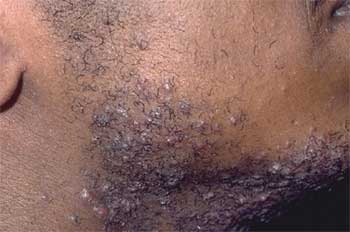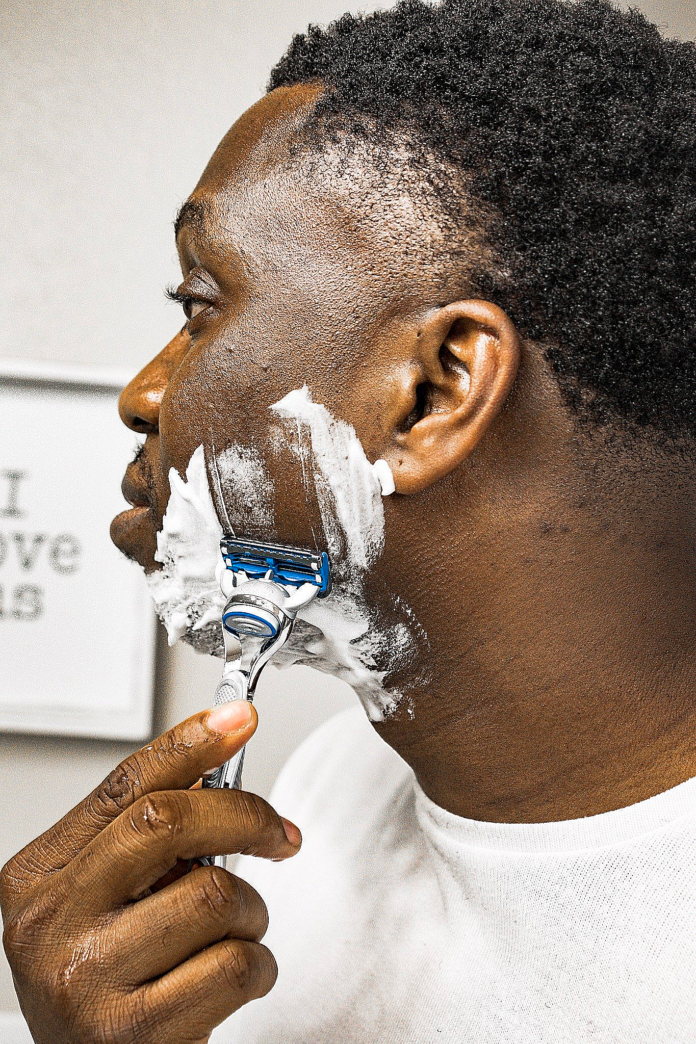Ingrown hairs or razor bumps have been the bane of practically every Black man’s existence, and as a matter of fact, over 80 percent of them experience this condition after shaving. Older Black men, in particular, tend to not want to do anything about the problem. So what are razor bumps and why do they plague Black men?
When pseudofolliculitis or razor bumps occur, curly/wiry strands of hair are shaved down close to the skin’s surface which causes them to U-turn and grow back into the skin leading to inflammation, itchiness, skin discoloration, pimples and possible scarring. Razor bumps which can also be cosmetically disfiguring can keep springing up especially in the beard and neck area and the degree of severity can range from a relatively mild irritation to serious infections and keloids. But, hold the phone!
Shaving is not the only cause of razor bumps.

There are various types of hair removal including waxing, plucking, tweezing and threading that can also lead to ingrown hairs according to Nada Elbuluk, M.D., is a board-certified dermatologist and Assistant Professor at the USC Keck School of Medicine, Department of Dermatology in Los Angeles. Razor bump sufferers can opt to let their facial hair grow out in order to avoid the problem but this move is obviously not a practical one. Dr. Elbuluk advises. “It is best to wait until razor bumps have resolved before going back to shaving or engaging in further hair removal at the site.”
Follow these tips in order to correctly treat any razor bump issues and keep your skin smooth and refreshed:
- Always go with the grain and never pull or stretch the skin you’re about to shave.
- Don’t shave so often, space out the process to like once or twice a week, give the bumps time to heal.
- Before you start shaving, make sure to wet the skin surface first, then apply a product that can add moisture to the skin. Here are five shaving products to consider—AVEENO Therapeutic Shave Gel, MenScience Advanced Shave Formula, Recipe for Men Clear Shaving Gel, Elemis Ice Cool Foaming Men’s Shave Gel, and Boots No. 7 Men’s Calming Anti-Friction Shave Gel (all available at Amazon.com).
- Avoid cutting the hair too close to the skin. Razor bumps sufferers should solely concentrate on getting a clean shave and not strive for a silky smooth skin surface.
- Don’t continuously pass a razor over an area. “One of the worst things to do when having ingrown hair is to continue to shave and remove hair in the affected region,” Dr. Elbuluk cautions.
- After shaving, apply a cold, wet cloth against your face for about five minutes to keep those bumps at bay
Try the home remedy route first to help ease and shrink razor bumps:
Black Tea: contains tannic acid which is known for reducing inflammation and redness. Place a tea bag in warm water, then gently rub it wherever you have inflammation and leave it on for about 20 minutes. Rinse with warm water. Repeat the process over the course of a few days.
Lemon Juice: an anesthetic that relieves soreness; slice a fresh lemon in half, squeeze its juice into a small bowl, then use a sterilized cotton ball to dab the inflamed areas of your skin. Leave the juice on for about 15 minutes, then rinse with tepid water.
If all else fails and razor bumps become even more problematic, a visit to a dermatologist is probably your next best bet. A doctor might recommend a regimen of an anti-bacterial wash and topical cream retinoid that will treat and help prevent future razor bumps.











